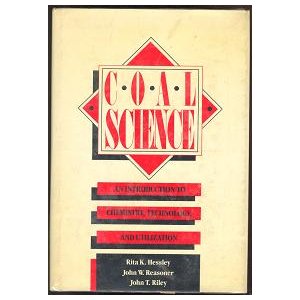

| COAL SCIENCE An Introduction to Chemistry, Technology, and Utilization Rita K. Hessley John W. Reasoner John T. Riley New York: John Wiley & Sons, June 1986 |
Rating: 4.5 High |
|||
| ISBN-13 978-0-471-81225-8 | ||||
| ISBN-10 0-471-81225-0 | 269pp. | HC | $? | |
| Page 14: | "The presence of large amounts of moisture in coal renders it of less commercial value." |
| How about "lowers its commercial value"? |
| Page 14: | "...extreme sheer forces—folding and thrusting..." |
| Spelling: S/B "shear". |
| Page 44: | "The accumulation of debris in swampy areas form what we now call peat bogs." |
| Number: S/B "forms". |
| Pages 46-7: | "Geologists generally agree that centuries ago the climate was quite humid and was uniform over almost the entire earth." |
| No: not centuries ago; much farther back than that. |
| Page 48: | "The media is generally neutral or slightly alkaline." |
| Number: S/B "are". |
| Page 56: | "In Bouska's view, no biochemical process can occur at depths of more than 100 m, but others limit biochemical activity to only 10 m..." |
| This has been found not to be the case. |
| Page 66: | "The analysis of calorific value with rank..." |
| This usage is correct; the term "calorific value" relates to the heat content of fuels, and is subtly different than "caloric value" as applied to foods. |
| Page 68: | "Vitrain is a bright and glossy band." |
| Kind of sounds like Abba — or the Bangles. Glitter rock, anyone?. |
| Page 104: | "The oils and asphaltenes are substances of relatively low molecular weight (generally 500 or less), while the presphaltenes tend to have a significantly higher molecular weight (> 1,000)." |
| Spelling: S/B "preasphaltenes". |
| Page 173: | "In operation, the Koppers-Totzek process feeds very finely pulverized coal along with steam and oxygen into a two- or four-burner, refractory-lined, cyclindrical reactor..." |
| Spelling: S/B "cylindrical". |

 To contact Chris Winter, send email to this address.
To contact Chris Winter, send email to this address.